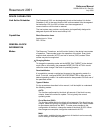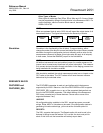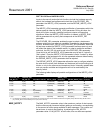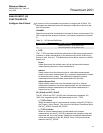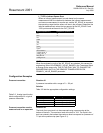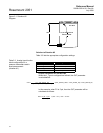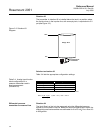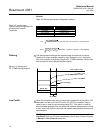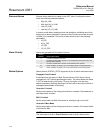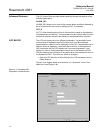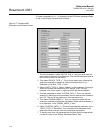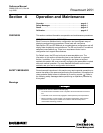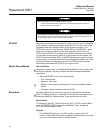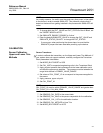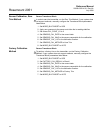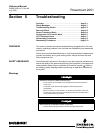
Reference Manual
00809-0200-4101, Rev AA
July 2008
Rosemount 2051
3-10
Process Alarms Process Alarm detection is based on the OUT value. Configure the alarm
limits of the following standard alarms:
• High (HI_LIM)
• High high (HI_HI_LIM)
• Low (LO_LIM)
• Low low (LO_LO_LIM)
In order to avoid alarm chattering when the variable is oscillating around the
alarm limit, an alarm hysteresis in percent of the PV span can be set using the
ALARM_HYS parameter. The priority of each alarm is set in the following
parameters:
•HI_PRI
• HI_HI_PRI
•LO_PRI
• LO_LO_PRI
Alarm Priority Alarms are grouped into five levels of priority:
Status Options Status Options (STATUS_OPTS) supported by the AI block are shown below:
Propagate Fault Forward
If the status from the sensor is Bad, Device failure or Bad, Sensor failure,
propagate it to OUT without generating an alarm. The use of these sub-status
in OUT is determined by this option. Through this option, the user may
determine whether alarming (sending of an alert) will be done by the block or
propagated downstream for alarming.
Uncertain if Limited
Set the output status of the Analog Input block to uncertain if the measured or
calculated value is limited.
BAD if Limited
Set the output status to Bad if the sensor is violating a high or low limit.
Uncertain if Man Mode
Set the output status of the Analog Input block to uncertain if the actual mode
of the block is Man.
NOTES
The instrument must be in Out of Service mode to set the status option.
Priority
Number
Priority Description
0 The alarm condition is not used.
1 An alarm condition with a priority of 1 is recognized by the system, but is not
reported to the operator.
2 An alarm condition with a priority of 2 is reported to the operator.
3-7 Alarm conditions of priority 3 to 7 are advisory alarms of increasing priority.
8-15 Alarm conditions of priority 8 to 15 are critical alarms of increasing priority.



